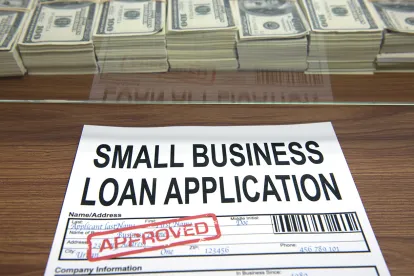Participants in M&A transactions may lose eligibility, possibly retroactively, for the “employee retention credit” under Section 2301 of the CARES Act (Coronavirus Aid, Relief, and Economic Security Act) if a party to the transaction has previously taken out a Paycheck Protection Program (“PPP”) loan.
The CARES Act allows employers to claim a payroll tax credit of up to $5,000 per employee (the “Employee Retention Credit”), provided that the employer meets various eligibility criteria. Notably, employers that obtain a PPP loan under the CARES Act are ineligible for the Employee Retention Credit. Furthermore, to determine an employer’s eligibility for the Employee Retention Credit, multiple employers may be aggregated as a single employer. All entities that are treated as a single employer under section 52(a) or (b) or section 414(m) or (o) of the Internal Revenue Code are considered one employer for purposes of the Employee Retention Credit. As such, if a single member of an aggregated group has obtained a PPP loan, the entire aggregated group will be ineligible for the Employee Retention Credit. These aggregation rules apply provisions used to determine affiliated employers for benefit plan purposes. Consequently, the aggregated group may be a broader group than many expect.
Application to M&A
The mutual exclusivity of the PPP loans the Employee Retention Credit is especially relevant in the M&A context, where members of the group will change over time as a result of transactions. The rules for testing eligibility and the consequences of those changes are uncertain at this time, and the Department of the Treasury has not provided guidance on these issues. Consequently, we can only make reasoned interpretations of the risk and potential consequences. Subsequent guidance may provide clarity and interpretations that are different than those discussed here.
The following is an analysis of two common scenarios:
Target Company PPP Loan:
In this example, the target company received a PPP loan prior to the consummation of the transaction that was not returned prior to the May 18, 2020 safe harbor date. The buyer acquires all the outstanding equity interests in the target. As a consequence, the target joins the buyer’s aggregated group. Members of the buyer’s aggregated group previously and continue to claim the Employee Retention Credit.
Possible interpretations of the transaction include:
-
The buyer’s aggregated group is no longer eligible for the Employee Retention Credit for payments made on or after the closing date.
-
The buyer’s aggregated group is not eligible for the Employee Retention Credit, and must return the credit received prior to the closing date.
While a number of interpretative and policy arguments may be made that the Employee Retention Credit should only be disallowed on a prospective basis in this scenario, buyers should consider the relative risks and potential impact if this sensible interpretation is not followed, and the entire credit is subsequently disallowed.
Buyer Company PPP Loan:
In this example, the buyer previously received a PPP loan that was not returned prior to the May 18, 2020 safe harbor date. Buyer acquires all the outstanding equity interests in the target. As a consequence, the target joins the buyer’s aggregated group. The target company previously claimed the Employee Retention Credit.
Possible interpretations of the transaction include:
-
The target company is no longer eligible for the Employee Retention Credit for payments made on or after the closing date.
-
The target company must return previously claimed credits for payments made prior to the closing date.
Again, while interpretative and policy arguments may be made that the credit should only be disallowed on a prospective basis in this scenario, buyers and sellers should consider the relative risks and potential impact if this sensible interpretation is not followed, and the entire Employee Retention Credit is subsequently disallowed.
Relatedly, IRS guidance provides that eventual forgiveness of a PPP loan does not factor into eligibility for the Employee Retention Credit. However, employers that received a PPP loan but repaid such loan by May 18, 2020 (under the safe harbor established by the Small Business Administration) may claim the Employee Retention Credit if otherwise eligible.
Parties that are exploring transactions should be aware of the potential loss of eligibility for the Employee Retention Credit, from both a target and acquirer standpoint. Employers should consult their tax advisors to understand how Employee Retention Credit considerations should impact the transaction, and to evaluate potential structuring strategies to account for this issue.




 />i
/>i

